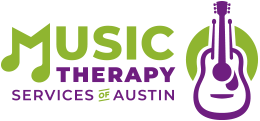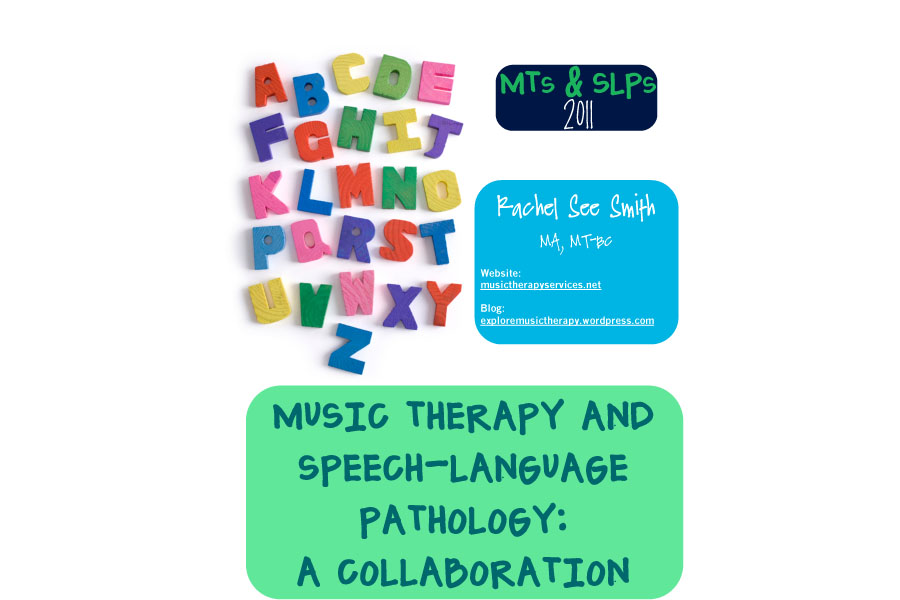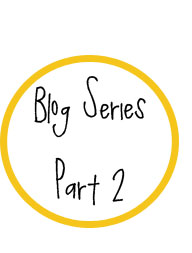Blog Series on SLP and MT Collaboration: Part 2
The purpose of this blog series is to advocate for the collaboration of speech therapy and music therapy.
(If you missed the list of the blog posts that will be included in this series, click here!)
In grad school, I became completely engrossed (perhaps even infatuated) with the idea of collaborating with SLPs. However, I didn’t know if this infatuation was mutual, or if the other field would think I was stepping on their toes, out of my element/expertise, etc. What I found, though, was that out of all of the SLP students and faculty with which I discussed the idea of co-treating, and/or collaborating, 100% of them were on-board.
Here is one quote I received after a SLP student observed my music therapy session:
I was wowed by the [music therapy] session. The children were very engaged and you managed them very, very well. I didn’t see the usual behaviors we often see when they are stressed or unsure of themselves. I think the music itself was engaging and soothing. I **absolutely** see a role for music therapy and speech therapy collaboration. – Lori
This gave me hope and encouragement for delving further into this topic. The abridged version of what I discovered can be categorized under three headings: Do, Don’t, & Why Not?
Speech-Language Therapy and Music Therapy Collaboration:
The Dos, the Don’ts, and the “Why Nots?”
Definition of collaboration: “The process of working jointly with others in an intellectual endeavor to bring about change, and it implies shared responsibility”
As the number of cases of children being identified with communication disorders increases, so does the need for cost effective treatment. Therefore, many therapists are looking to collaboration and co-treatment as a way to meet this need. This is evidenced by a recent survey of 695 music therapists, as 44.6% said they collaborate with SLPs (Register, 2002).
Why utilize inter-, trans-, or multi-disciplinary collaboration between music therapy and speech therapy?
*It benefits the client’s overall well-being
*It is cost effective
*Language and music are structurally similar in many ways
5 similarities between music and language:
- Music and Language are universal and specific to humans
- Both have pitch, timbre, rhythm, and durational features
- Spontaneous speech and spontaneous singing typically develop within infants at approximately the same time.
- Music and language have auditory, vocal, and visual uses (both use written systems) and are built on structure and rules.
- Distinct forms of music and language exist and vary across cultures

When You Collaborate with the Other Therapist:
Do…
…Communicate with one another on how to best address the needs of the client and what music interventions can be used to enhance and support communication areas the SLP is addressing with the client.
…Co-Treat!
…Collaborate on goal development (find a time that will work for both of you – even if it’s just for 10-15 minutes a week!). If meeting in person does not seem to work, try other technologies, such as email correspondence, using Skype, Twitter, or an instant messaging program. This may work better for both of your schedules.
…Understand your limits (do not overstep your professional training bounds)
…Have a clear understanding of the other profession’s scope of practice. MTs should look at the ASHA scope of practice and SLPs need to be aware of the CBMT scope of practice. By doing this, the professionals can avoid conflict, confusion, and misunderstandings.
…Understand each profession’s strengths and areas of training
…Educate yourself on the lingo of the other field (healthcare professions LOVE annoying, hard-to-remember acronyms)
…Be flexible!
…Share information with one another: therapy news articles, ideas, pamphlets, research papers, etc.
…Communicate, Communicate, Communicate!
Don’t (A.K.A, Possible Barriers to MT and SLP Collaboration)…
…Forget that everyone is busy. Utilize your collaboration time well – be prepared, organized, and make efficient use of the other therapist’s rare free moment.
…Get too easily frustrated. You, or the other therapist, may lack knowledge about the other profession. If this is the case, do your homework and read up on the other field!
…Assume that everyone thinks like you. There may be different professional perspectives and perceptions between the MT and SLP that may weaken collaborative efforts
…Be offended if some professionals are uncomfortable with the idea of collaboration. Some are of the opinion that collaboration leads to a blurring of roles in shared treatment.
…Allow yourself to get sucked into professional competition or territorialism!
Why Not?:
Let’s make this happen! MTs and SLPs can benefit from shared knowledge, shared responsibilities, and team support (Abramson & Rosenthal, 1995, Andrews, 1990, Register, 2002, Vachon, 1987).
Be proactive – collaboration can improve the quality of life of your patient!
“Successful collaboration is most effective when those involved share a belief system about the overall care and treatment of the patient” (Rychener-Hobson, 2006)
Rachel See Smith, MA, MT-BC, is a board-certified music therapist with a B.A. in communication disorders from Truman State University and a M.A. in music therapy from the University of Iowa. She currently works as an independent music therapy contractor in Austin, Texas, and maintains an informational music therapy blog, exploremusictherapy.wordpress.com and the online paper, “The Collaborative Therapist”: http://paper.li/RachelSeeSmith/1311918262. To read about Rachel’s private practice, visit: www.musictherapyservices.net.
References
American Speech-Language-Hearing Association (ASHA). (n.d.). Standards and implementation procedures for the certificate of clinical competence.
Cohen, N. S. (1994). Speech and song: Implications for therapy. Music Therapy Perspectives, 12(1), 8-14.
Miller, S. (1982). Music therapy for handicapped children: Speech impaired. Project Monograph Series. Washington, DC: National Association for Music Therapy.
Peters, J. S. (2000). Music therapy for individuals who have communication disorders or impairments. In Music therapy: An introduction (2nd ed., pp.170-188). Springfield, IL: Charles C. Thomas Publisher.
Register, D. (2002). Collaboration and consultation: A survey of board certified music therapists. Journal of Music Therapy, 39(4), 305-321.
Rychener-Hobson, M. (2006). The Collaboration of Music Therapy and Speech-Language Pathology in the Treatment of Neurogenic Communication Disorders: Part II — Collaborative Strategies and Scope of Practice. Music Therapy Perspectives, 24(2), 66-72.
Zoller, M. (1991). Use of music activities in speech-language therapy. Language, Speech, and Hearing Services in Schools, 22.
Comments are closed.





Love this! I’m sharing it with my brother’s girlfriend, who is a SLP in training. She’s either going to Truman or MSU for her graduate program (you know where I’m rooting for her to go…)!
Excellent!! (Perhaps I’ll put a few subliminal “GO TO TRUMAN” messages in my blog…) ;). Thanks for reading, Erin! And your website/blog is absolutely beautiful, powerful, and inspirational!